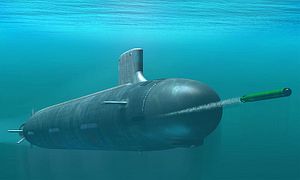Earlier this week, the U.S. Navy announced a contract with General Dynamics and Huntington Ingalls to build ten new Virginia-class submarines over the next ten years. The deal, one of the largest in the history of military acquisition, ensures a continued global role for the USN’s silent service.
The USN has maintained a consistent nuclear attack submarine capability since the 1950s. Initially focused on anti-shipping missions, over time the SSN force has developed critical anti-submarine warfare (ASW), recon, land attack, and even Special Operations Forces (SOF) roles. More so than aircraft carriers or even manned aircraft, we can expect that the USN will continue to need modern subs to manage these missions over the lifespan of these boats. The fleet has proven so successful over the past decades that attack subs are likely to acquire more missions, not fewer.
The deal also ensures that the United States will retain, for the foreseeable future, the capacity to construct additional nuclear attack submarines. As Russia, France, and the United Kingdom have learned, taking a “break” from the construction of nuclear submarines leads to deterioration of the infrastructure necessary to maintain and update the force. Submarine construction requires skilled workforce and engineering teams in order to meet the narrow tolerances required for deep operations and silent running.
However attractive the notion of spacing construction out may appear from a budgetary perspective, it creates significant long-term problems with the infrastructure and human capital of the shipbuilding industry. Of the major nuclear submarine operators, only China appears to have developed the capability of maintaining long-term, nearly continuous production, as Russian efforts to jumpstart the industry continue to meet with difficulties.
While some foreign competitors have newer designs, the latest order of Virginia subs (Block IV) will include updates to already existing design specifics, allowing both a lower cost per unit and also the incremental integration of new technologies. Indeed, initial projections for the SSN-774, learning from experience with the Los Angeles-class, built in the expectation of integrating commercial and military innovations into the hull over the long production lifespan.
Including boats already under construction, between now and 2023 the USN will introduce 17 new nuclear attack submarines to the fleet. Depending on construction decisions in Russia and China, this will very nearly equal the production of the rest of the world combined. The existence of a proven design, an experienced workforce, and an industry capable of high-quality submarine construction puts the U.S. ahead of nearly every competitor. This contract suggests that, defense austerity notwithstanding, the U.S. continues to see the submarine force as playing a central role in the projection of U.S. power and the defense of U.S. interests over the next several decades.

































